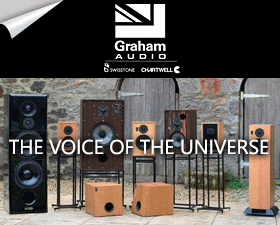The Zu line below Druid is the normal-people lineup, with Soul/Soul Supreme the boundary models. Zu Cube is a specialty speaker for audiophiles needing a compact speaker in small spaces or secondary systems. Omen line is the party speaker and normal music-for-fun buyer. Druid, Definition, Dominance and anything that emerges between Def and Dominance is for the narrow spectrum of buyers who will spend unreasonable money on hifi. Omen doesn't get the cabinet sophistication and is benefits from affordable, tried-and-true earlier generation Zu developments.
Why aren't horns popular in America? Lots of reasons.
Yes we have have more indoor space than people in many countries but horns generally need larger rooms to sonically integrate properly. And they tend to be visually dominant (and to non-audiophile spouses, visually objectionable). Also truly neutral-sounding horns are scarce. They don't like placement close to walls. Even today's improved horns still have trace shout factors. And suitable electronics are not commonplace in enough purchase outlets to support horns ever being popular. Further, in much of America's wood-frame, drywall-on-studs interior home construction, horns energize a lot of glare. There aren't enough people who are audiophiles, music lovers, monied and willing to give over a dedicated, properly-damped room to hifi, for full acoustic treatment, to ever make the horn speaker form factor "popular."
Phil
I find your characterizations of why horns aren't more popular in America based more on a bunch of tropes than real information. While it is harder to get a good integrated sound from a horn in theory, in practice there are a number of companies out there now that do an excellent job. It is more demanding to build them correctly and drivers tend to be more expensive so there are fewer designers doing them. Let's never forget though that JBL is alive and well but abandoned horns for the home market a long time ago (some of the best all-time horn speakers came from the 50s-80s JBL designers). Altec (RIP) was a great American brand that made excellent sound speakers. Ever hear a 604 duplex in a proper cabinet? I would take that over a Zu whatever any day of the week and twice on Sunday. Not to say that Zu is bad, its not but it is also not breaking new ground...finally improving to a proper high end sound I would say (no I don't consider the older Zu stuff as worthy).
IMO, the real reason for their general lack of popularity amongst American audiophiles is marketing and magazines. They pushed the low sensitivity/high power narrative for a long time and hard that horns were bad and from that old bygone era where power was scarce so you HAD to have a horn. What they failed to mention (and what old people apparently forgot) was that those systems sounded GOOD! Of course most were found in theaters so people didn't really know very well what they were hearing but the well-heeled audiophile from the early 1960s could have a JBL Hartsfield in the corner or Paragon console, powered by some McIntosh or Marantz tubes and be getting, even by today's standards, world class sound. There is a reason why these systems bring 30-50K on the used market and it's not nostalgia.
FWIW, the Japanese audiophiles never really bought this marketing campaign and they gobbled up JBLs, Altecs, Tannoys etc. and their rooms are REALLY small in general...so much for the horns not working in small rooms. Europeans woke up in the 90s, especially the Germans, which is why you have quite a few from that country now...America is just behind the curve a bit with the whole Horn + SET thing...
The market right now is flooded with amplifiers that are more or less suitable for horns (everything you wrote on Audiogon about inexpensive chinese amps and not so inexpensive Audion, etc.) and most of this is also available in America. Americans have grown up on a diet of Wilson, Audio Research etc. that doesn't lend itself to particular presentation that makes horns to many sound more like life and less like hifi.
You also fail to consider that horns can work better actually in a challenged room specifically because of their higher directionality as compared to conventional speakers. so what you are saying regarding the horns and rooms doesn't really fly when looked at closely. The one area where the horn may suffer in a lossy room is bass and this is where European makes, with their stout concrete and brick rooms, may come across as lean in an American home (and American speakers can sound bloated over here). Close to walls? Again higher directionality reduces sidewall reflections as compared to the Harman school of wide, even dispersion that interacts heavily with the walls, floor and ceiling. Dipole line source speakers can work even better in tight spaces (contrary to conventional "wisdom") because that first side wall reflection and the ceiling/floor bounces are minimized but horns do just fine in smaller rooms (I know I have been there/done that and very successfully.)
As to the augmented widebander, which is the Druid, I have nothing in principle with this philosophy and I have a pair of good sounding widebanders myself (Decware HDTs, which are being augmented with a Beyma CP350Ti compression driver). So, I know about the coherence to which you preach (All my full-range electrostats were also essentially single widebanders). That said, I know of some horn systems that have equally good coherence (or at least I, even with my sensitivities in this direction, do not hear obvious discontinuities) and do far better when the music gets messy.
As to Zu providing something you couldn't get elsewhere...well I am not sure how hard you tried to look beyond American brands to find out...
















